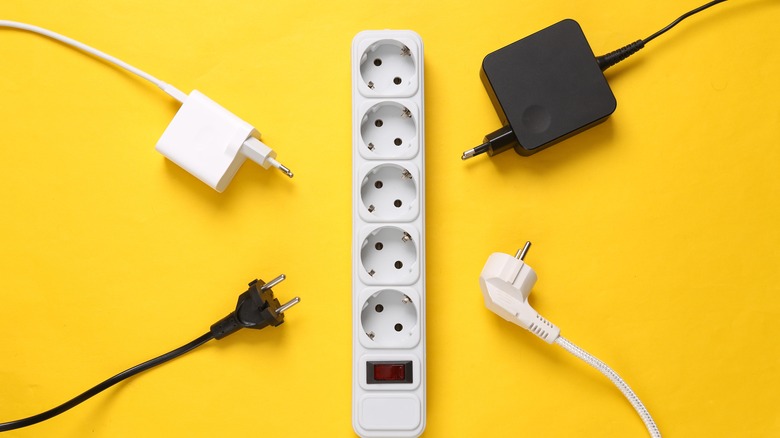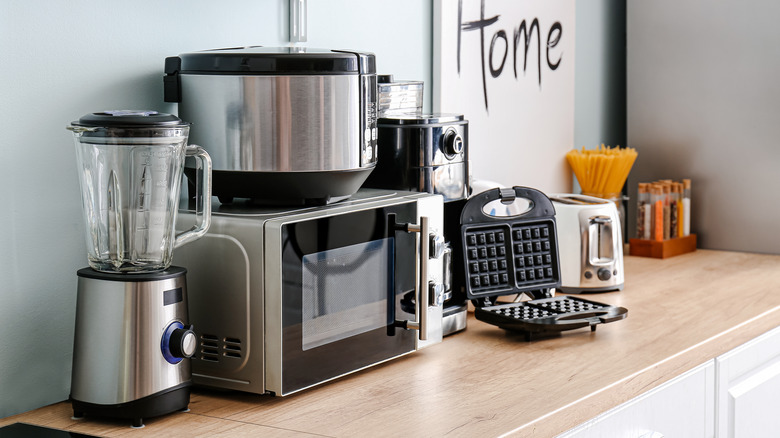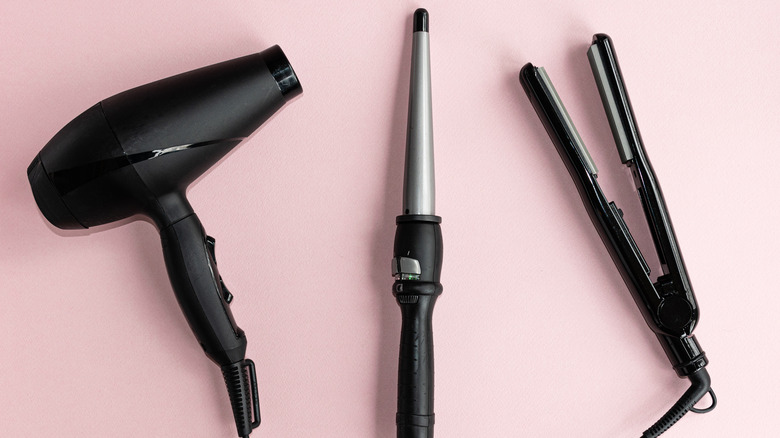Items You Should Avoid Plugging Into A Power Strip
Power strips are useful tools for any home or office, especially those lacking an adequate number of electrical outlets. These common household gadgets allow users to connect multiple devices to one source, which is plugged directly into a single socket. The simplicity and efficiency of power strips make them perfect for those needing to plug in a lamp, charge a portable device, or power other light-load electronics, explains My Electric Works.
However, when used incorrectly, power strips can be dangerous and can risk the safety of the residents. Anything from overloading the power strip to prolonging the strip's use can result in an electrical fire developing inside the house. Power strips are easy to use, but aren't compatible with all of the devices found around your home that need electricity to function. To prevent placing yourself or your loved ones in a hazardous situation, here are some items around the house that you should certainly avoid plugging into a power strip.
Kitchen appliances
Many appliances, especially those found inside the kitchen, generally require a lot of electricity. Because of this, these appliances should be plugged directly into a power outlet rather than a detachable strip. According to My Electric Works, each power strip has its own ampacity rating — or the maximum current that a conductor can handle before it overheats. Plugging in one or more appliance that requires an excessive amount of electricity can lead to the strip overloading. In addition, U.S. Electric states that some appliances, like refrigerators, require consistent power in order to function, which power strips typically aren't created to handle.
However, even some smaller kitchen appliances, like toasters, coffee makers, and microwaves, are also unfit for power strips. Each of these devices relies upon a high capacity to operate and could easily overwork a portable strip. My Electric Works advises that an appliance's size does not indicate the amount of electricity it requires to function. In other words, although an appliance may be small, it can still draw significant amounts of power.
Hair styling tools
Outlets in bathrooms often come in short supply, but that's not an excuse to use a power strip for your hair styling needs. Hairdressing tools are impractical when used with power strips for the same reasons as kitchen appliances — they require a lot of electricity to function and are therefore best served by a wall outlet. Whether you're dealing with a flat iron, curling iron, or hairdryer, any product that generates heat as its primary function will likely short-circuit a power strip, warns Lemere Electric.
Living in a house with a limited supply of electrical outlets can be a pain, especially if you regularly use things like an electric toothbrush, a shaver, or other devices that need to be charged regularly. While electrical items like these may be safe enough to be used with a power strip, Hi-Lite Electric Inc. warns against bringing power strips or extension cords into a bathroom at all. There are many opportunities for the device to come in contact with water, which could seriously harm whoever is using it.


